Dust and Destruction: The Racing Economy in F-Zero 99
How massive multiplayer setups can be balanced for fun and engagement
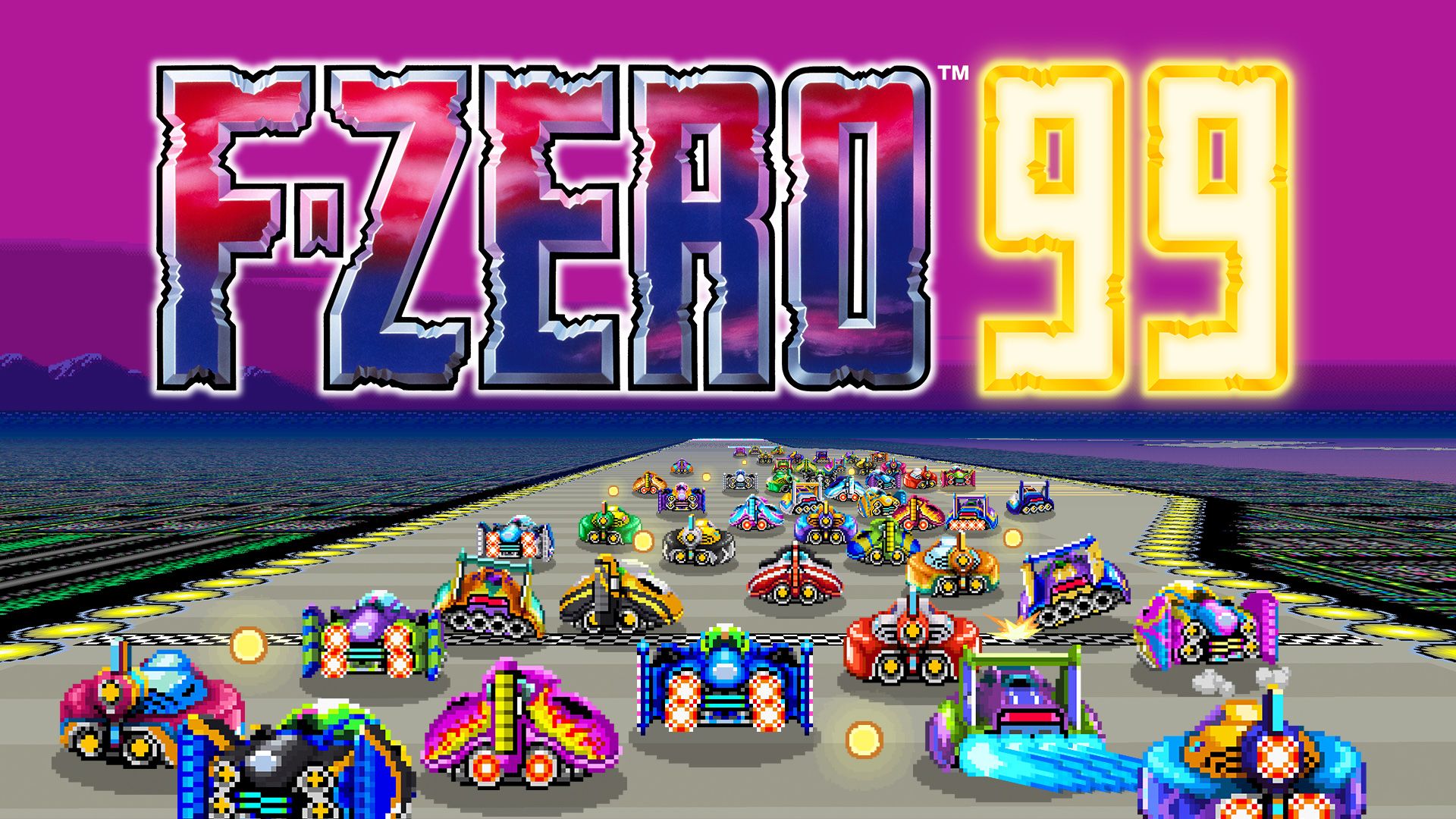
F-Zero 99 is the newest online multiplayer racing game published by Nintendo as a free download through the Nintendo Switch Online (NSO) subscription. The game is a spin on the classic original F-Zero that lit up screens in the 90s for the Super Nintendo. This new version incorporates new elements and mechanics, with the most notable being the massive setup: up to 99 players racing against each other in the same circuit.
However chaotic it might sound, the game experience is designed to allow all 99 players to feel engaged and active in the race, resorting to excellent balancing strategies, match-making, and singular methods to achieve such a feat.
In this piece, we discuss how the game economy elements of F-Zero 99 allow for that and how they can be incorporated into other game setups to allow for a nice and fair experience, even in a massive competition setup.
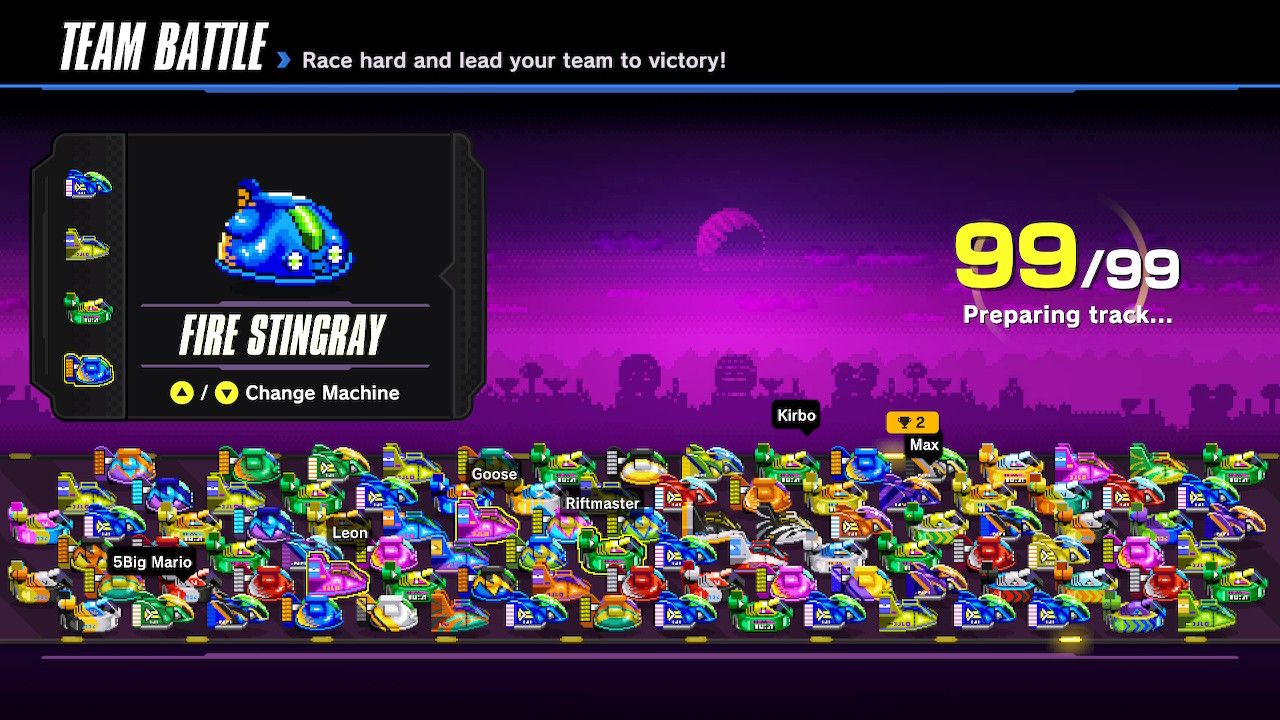
Racing & Surviving
Dexterity, along with knowing the stage layouts, are only partially responsible for surviving a race and getting a good position in F-Zero 99. Besides racing the other players, the core gameplay loop revolves around balancing the player's main resources: speed and energy.
Logically, the speed is used to outrun other players and is influenced by the road status and vehicle attributes, among other things. Energy is the player's integrity and, once depleted, removes the player's vehicle from the race. To continue racing, players must keep their energy above zero, which includes avoiding obstacles and other players.
Energy and speed are interchangeable resources. The player can trade their energy for a temporary boost, getting an edge in the race. On the other hand, but not as evident, the player can use the recovery area at the start of each lap, moving temporarily slower due to its placement and road type to recover energy.
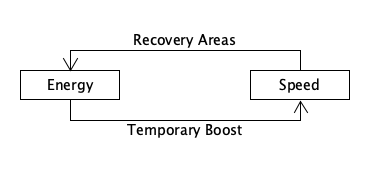
To increase the synergy between these two resources, the game offers additional mechanics in the form of Super Sparks, the Skyway, Ranking Elimination, and others.
Super Sparks are resources dropped after the collision between two vehicles, whether player vehicles or ghost grey and golden cars roaming the scenario. When one player collects enough Super Sparks, they can activate the Skyway, which works as an additional road on top of the stage that is without obstacles and filled with speed-up pads. Thus, the players are encouraged to engage in physical contact, potentially losing speed and energy, to get the bonus. In a sense, the Super Sparks and Skyway stimulate the player to use energy and speed to get more energy and speed back.
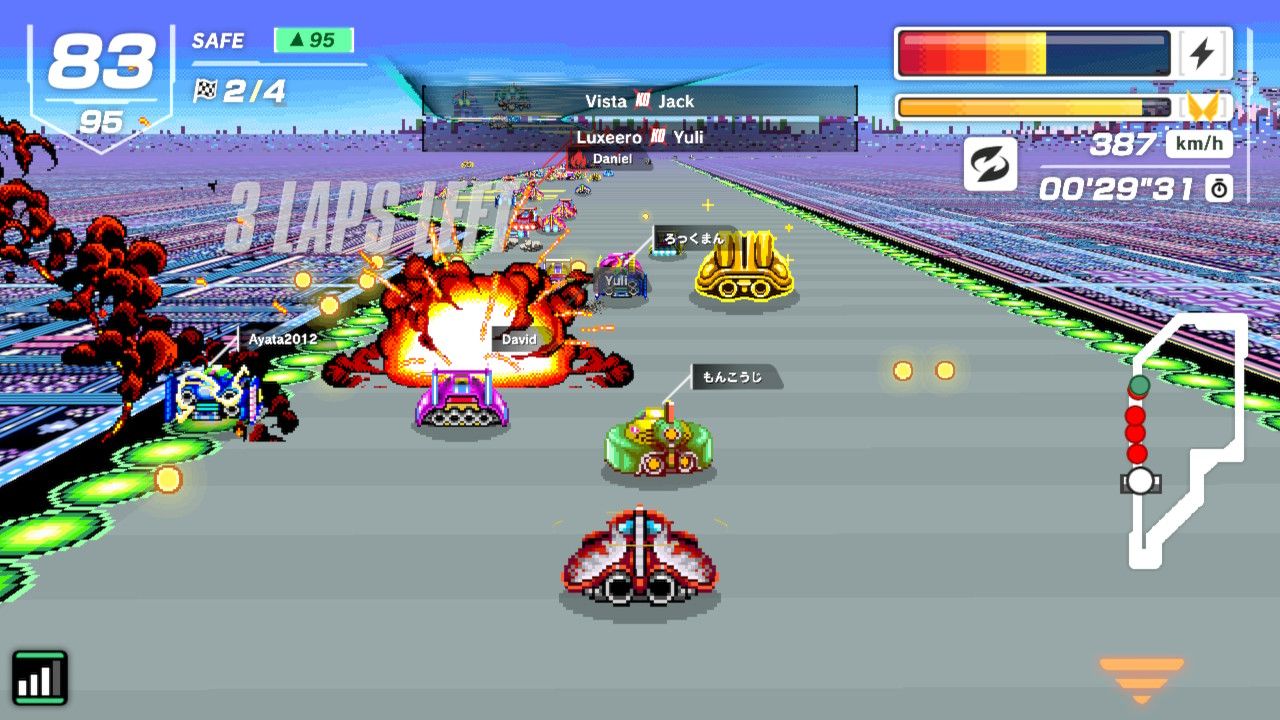
Ranking Elimination is another interesting addition to the gameplay loop that pushes players closer, incentivizing the other mechanics. As the players lap through the track, the number of allowed players is reduced (starting at 99, then 95, and so on). Players below the allowed ranking positions are automatically eliminated.
Players will push their skills to remain in the race, increasing the likelihood of spending energy for temporary boosts. That will eventually move players close together, possibly resulting in more collisions.
This game design strategy is also known as Rubber-Banding, as Ernest Adams and Joris Dormans described in the Game Mechanics: Advanced Game Design book. It consists of using mechanics and economy relations to keep racers closer together as if there is a form of rubber band wrapping all vehicles close together.
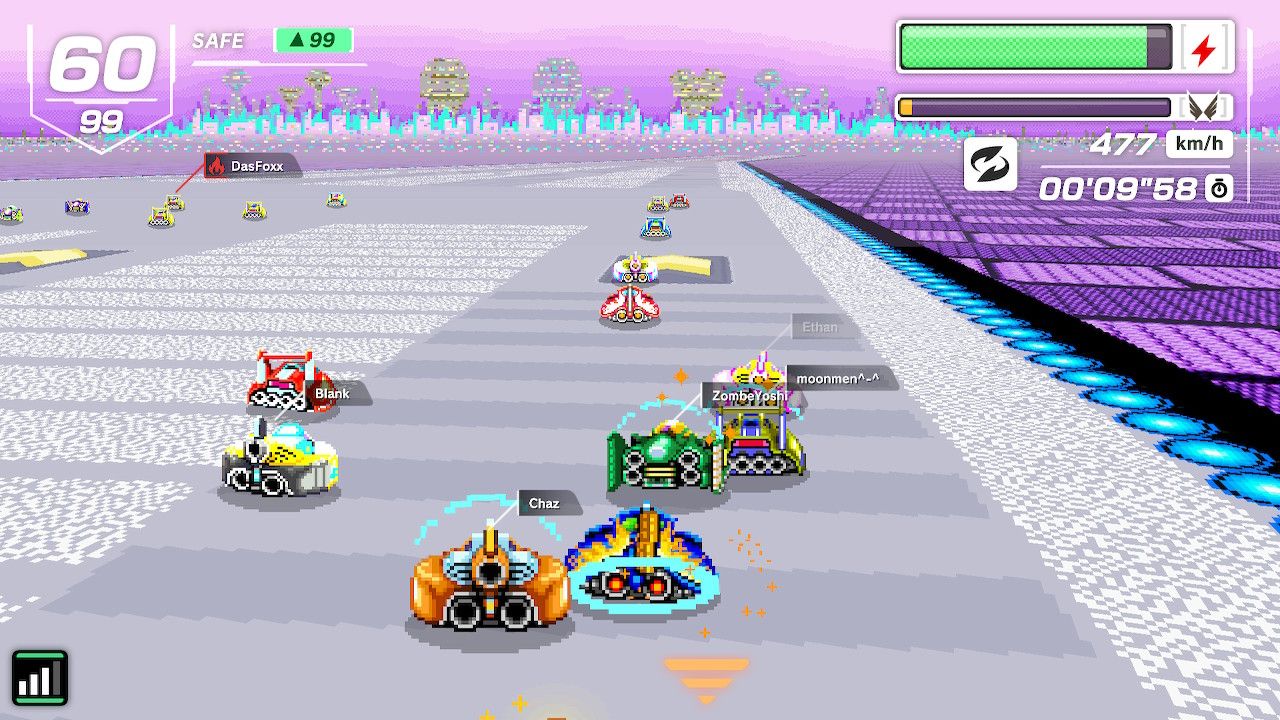
Similar Faults, Similar Foes
F-Zero 99 has a levelling system that rewards players with extra skins and aesthetic elements to customize their vehicles and avatars. Players are rewarded with levelling points by completing tracks and playing the game. It is not necessary to be on the podium to get levelling points, although it speeds up the process.
However, players are not ranked according to their levels, as the levelling system is not necessarily attached to player skill nor does it serve as a reliable means to assess players for the match-making system. For that, the player has a ranking system based on grades (C- the lowest and S20 the current highest).
The player ranking system works on a per-race basis. Every time players join a race, they are assigned four rivals - other players in similar rankings. To improve their ranks, the players must achieve better results than their rivals, whether by finishing in a better position or having the rivals destroyed or disqualified during the race. That way, although there are 98 other racers, the player needs only to surpass their specific rivals to improve their own player rank.
This approach transforms the massive race, filled with various ranges of player skills, into smaller sub-races among more or less equally capable racers. As a C-ranked player, you are not immediately concerned with pro-S20-ranked ones. You are putting your efforts into performing better than other C-ranks. It feels fairer towards your skills while still allowing you to participate in the massive competition without feeling your abilities are hindering you from progressing and having fun.
Rivals are clearly marked on the map and on the screen, which lures the player into using the previously mentioned mechanics and others to surpass or destroy them. Moreover, as rivals are similarly ranked, there is a higher chance of them committing the same errors and being placed in similar spots during the race, making it more likely that players and rivals will face each other frequently.
This is yet another way in which the game stimulates players, reinforces the main game economy resources, and promotes rubber banding.
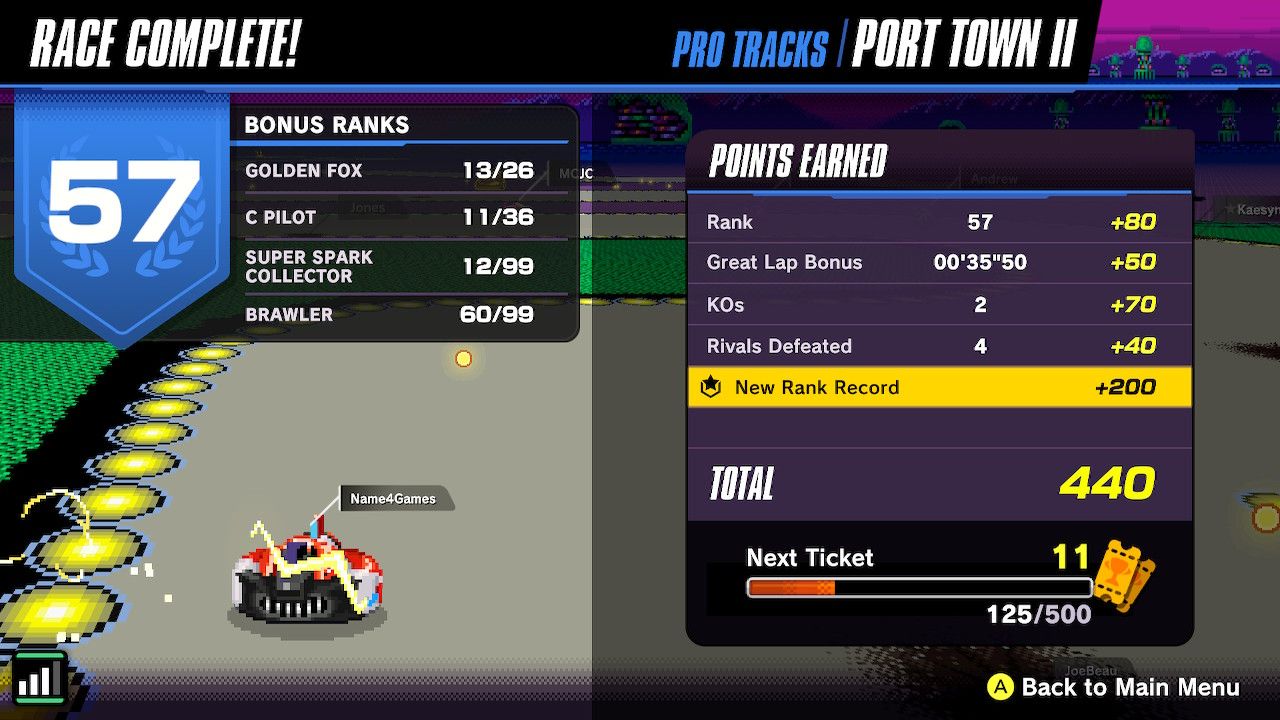
Lessons from Handling Massive Setups
We can summarize some of F-Zero 99 strategies to handle massive setups while promoting a good experience to all players as follows:
- Reward Participation: We only improve on what we practice. In a highly competitive setting such as F-Zero 99, it is essential to reward players for partaking in the game as it might motivate them to keep on playing and eventually improve. F-Zero 99 does so with the regular levelling system that grants skins and other customization options that do not interfere with the game directly but are enough to support continuous participation.
- Local x Global Focus: Allow players to focus on a smaller set of participants for more relevant ranking systems instead of pushing all players to strive for the podium. F-Zero 99 uses the rivals to compose a local competition among them that happens simultaneously as all 99 racers globally dash through the track.
- Explore The Resources for Rubber Banding Strategies: Use your resources in multiple ways to push players close together, keeping a good sense of competition even with varying degrees of player skills. F-Zero 99 uses Super Sparks that result from player collisions, which are then used to summon the Skyway. The Skyway helps players get closer to the others. Moreover, it also encourages players with the Ranking Elimination to push their skills and disqualify those too far away from the rest.
With those strategies, all players can feel relevant and capable of getting a good position even in a crowded and fierce competition setting.
Finally, a fourth point hovering on top of these is the concern with the individual experience. Every player is unique. Every player has a background, a life outside the tracks, and a reason for playing the game. Those strategies allow this uniqueness to find its place and align the experience towards their needs.
As in life, we are pushed to be our best selves and outperform others as if we are in constant competition. The F-Zero 99 approach shows us that, in many cases, the only real competition is with ourselves. We do not need to reach the podium to grow; most of the time, surviving through the race with all its difficulties is enough.
In our hobbies and careers, we often are compared, and compare ourselves, with others who hold some sort of position of success, while we expect unfairly to match their capacities somehow. The rival system in F-Zero 99 is a sort of aggressive system that I am not entirely in love with, but that still represents a more realistic perspective on how we should compare ourselves and our skills. Not with the S-20-ranked professionals born inside the futuristic landscape but with the others, closer to us, who face similar difficulties and challenges. They might not hold positions of success imposed by an unbalanced range of backgrounds, but they are striving and doing their best, whichever it might be.
Remember that even if you are outranked or eliminated in the race, you are very likely on the podium among those close to you, outside the tracks, in real life.
You can join me here if you want to know more about me and my work.
